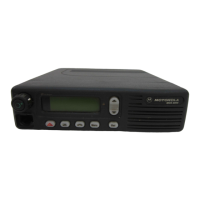304
even though receiving activity on another channel during priority
scan.
Priority Levels A number given to each radio user on a Trunked system to allow
system access to the most critical users during busy periods.
Assignment of priority levels is controlled by the System Manager.
Three levels of priority are available on a Privacy Plus System and five
levels are available on Type I SMARTNET system.
Priority Sample Rate The rate at which the priority channel is checked for activity in
priority scan.
Private-Line See “PL”.
Privacy Plus Privacy Plus is a type of Trunking system which is limited in the
options it provides to radio users. The system does not have
emergency or dynamic regrouping capabilities. Most shared (Public)
Trunking Systems are of the Privacy Plus variety.
Program Tree A figurative term used to describe the organization of a multi-level
menu-driven software program.
PTT Push-To-Talk feature or button.
PTT-ID Push-To-Talk IDentification. A feature that sends your radio’s
identification number on each transmission.
Queuing A method of servicing users which is used when a Trunking system is
busy. The Central Controller stores a radio's request to transmit and
makes determinations as to what radio will be serviced on a First-In
First-Out (FIFO) basis.
Quik- Call II A two-tone sequential tone signalling system.
Radio Check Software A signalling feature that lets your radio be polled to see if the radio is
within range and turned on. The user receives no indication of the
poll, except perhaps a brief lighting of the transmit or busy light.
Radio Interface Box See “RIB”.
Radio Interface Cable A cable that allows the radio to be connected (interfaced) to a host
computer for programming or tuning purposes.
Radio Service Software Software purchased by Motorola product resellers through a license
agreement that is delivered on a 3-1/2” diskette(s) and used to program
two-way radios with a unique set of features called personalities.
RAM Random Access Memory. A computer’s RAM is used to store the
contents of the current workspace. The radio’s RAM is loaded with a
copy of the EEPROM data. The program will sometimes write to the
radio’s RAM to temporarily change certain features such that the user
can get immediate feedback. These changes will not become
permanent in the radio’s codeplug until the radio is programmed.
READ The means by which a radio’s codeplug information is transferred
from the radio’s EEPROM to the workspace via the RIB.
Receive Frequency The center of the receive channel in MHz.

